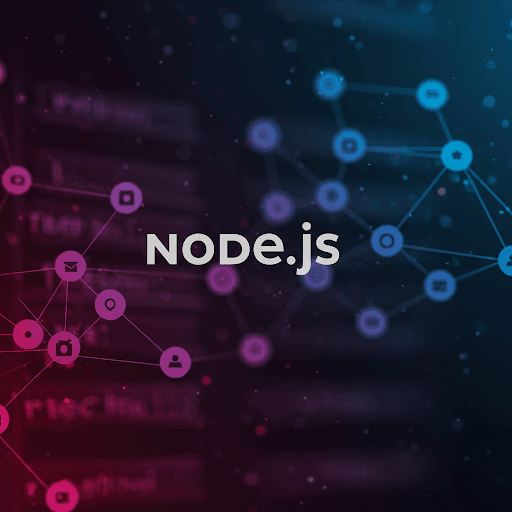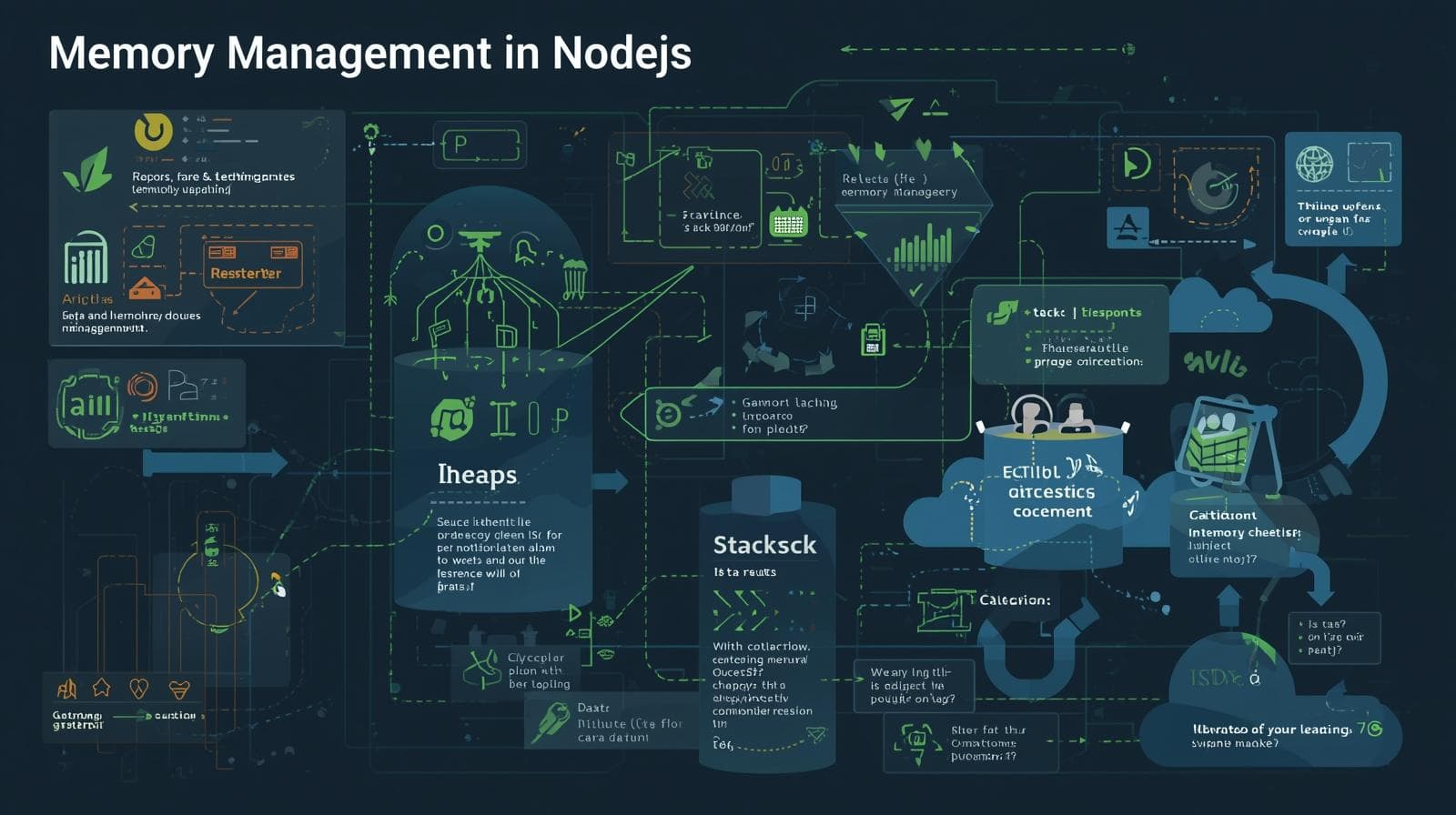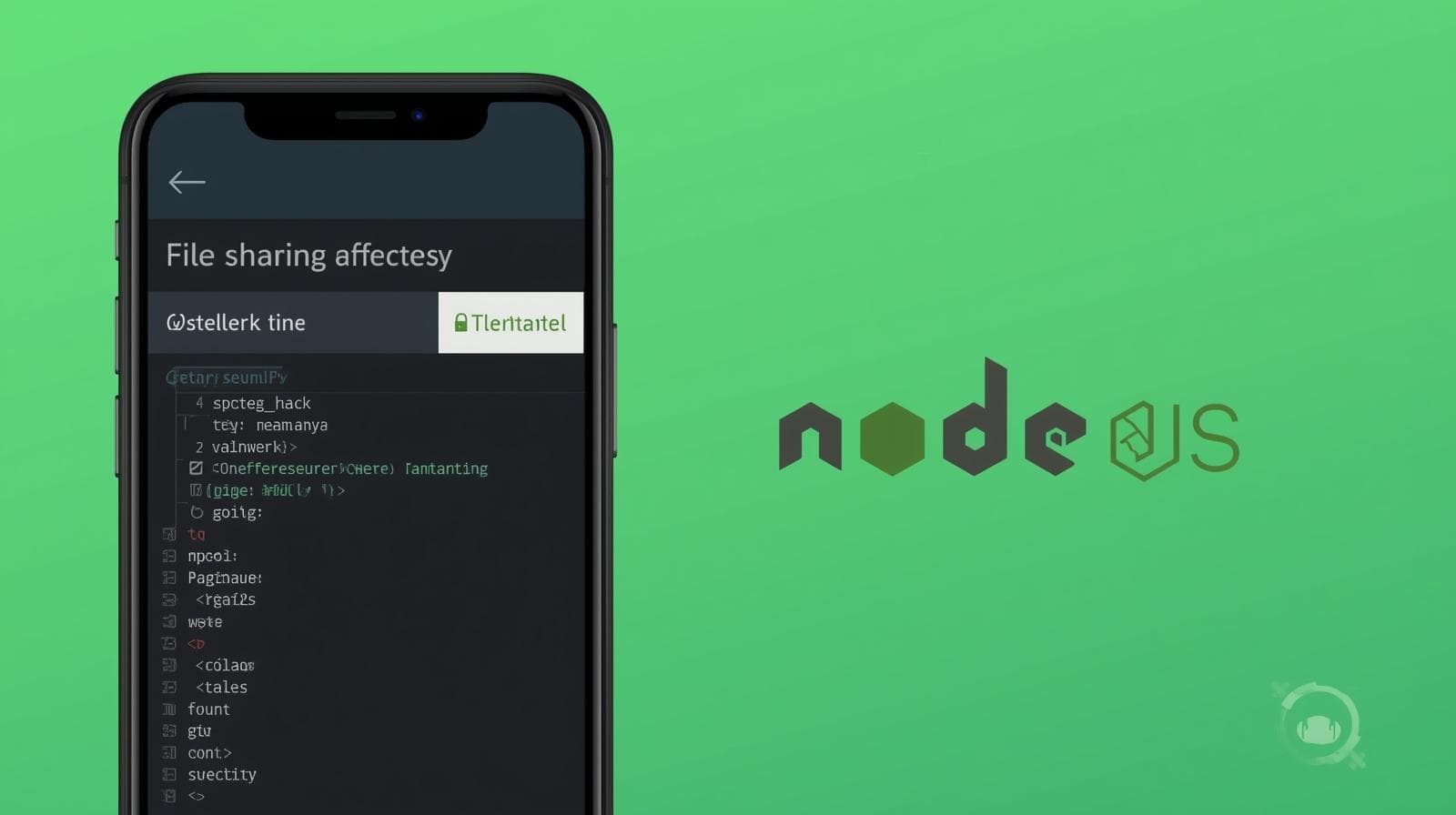Mastering Mongoose for Node.js: A Complete Guide to MongoDB Object Modeling

Dive deep into Mongoose for Node.js. Learn how to model your data, build robust APIs, and follow best practices with detailed examples. Elevate your backend skills with CoderCrafter's expert guidance.

Mastering Mongoose for Node.js: A Complete Guide to MongoDB Object Modeling
Mastering Mongoose for Node.js: Your Bridge to Structured MongoDB
If you've ever worked with MongoDB in a Node.js application, you know the feeling of freedom. Unlike rigid SQL tables, you can just throw JSON-like documents into your database and they… well, they just fit. It’s flexible, fast, and feels natural for JavaScript developers.
But that freedom can quickly turn into chaos.
Without any structure, you might find yourself with a user document that has an email field in one record and an emailAddress in another. You might be manually validating data types in every route, leading to repetitive and error-prone code. You're essentially building a skyscraper without blueprints.
This is where Mongoose enters the scene, not as a constraint, but as a powerful ally. It’s the elegant solution that brings a much-needed layer of structure, validation, and business logic to your MongoDB database.
In this comprehensive guide, we won't just scratch the surface. We will dive deep into the world of Mongoose, exploring its core concepts, building real-world examples, discussing best practices, and answering common questions. By the end, you'll see Mongoose not just as a library, but as an indispensable tool for building robust and maintainable Node.js applications.
What is Mongoose, Really?
At its core, Mongoose is an Object Data Modeling (ODM) library for MongoDB and Node.js. Let's break down that jargon:
Object: Refers to the objects in your JavaScript code (like a
Userobject).Data: The information stored in your MongoDB database.
Modeling: The process of creating a blueprint that defines the structure, behavior, and constraints for your data.
In simpler terms, Mongoose provides a structured schema for your data, enforces data types and validation rules, and allows you to define methods and relationships between your data entities. It sits between your Node.js application and your MongoDB database, translating your JavaScript objects into MongoDB documents and back again, seamlessly.
Mongoose vs. Native MongoDB Driver
You might be wondering, "Why not just use the official mongodb npm package?" It's a great question.
The native driver is powerful and gives you direct, unfiltered access to the database. It's like being given a full set of raw building materials. Mongoose, on the other hand, is like a pre-fabrication workshop. It takes those raw materials and gives you standardized, pre-cut beams, numbered panels, and a detailed instruction manual.
Here’s a quick comparison:
Feature | Native MongoDB Driver | Mongoose ODM |
|---|---|---|
Structure | Schema-less. You can insert any document. | Schema-based. Enforces a defined structure. |
Validation | Manual validation in your code. | Built-in validation (required, min/max, custom). |
Relationships | Manual reference handling. | Powerful population to easily join documents. |
Business Logic | Separate functions. | Instance & static methods on schemas. |
Convenience | More boilerplate code. | Abstraction with methods like |
While the native driver offers more control for highly specific scenarios, Mongoose dramatically increases development speed, reduces bugs, and improves code organization for the vast majority of applications.
Setting the Stage: Installation and Connection
Before we start modeling, let's get Mongoose into our project.
1. Installation
Fire up your terminal in your Node.js project directory and run:
bash
npm install mongoose2. Connecting to MongoDB
The first step in any application is to connect to your database. Mongoose makes this straightforward with its connect method.
Create a file named db.js or database.js:
javascript
// db.js
const mongoose = require('mongoose');
const connectDB = async () => {
try {
await mongoose.connect('mongodb://localhost:27017/my_database', {
// These options are no longer strictly necessary in newer versions
// but are good for legacy and clarity.
useNewUrlParser: true,
useUnifiedTopology: true,
});
console.log('MongoDB connected successfully via Mongoose!');
} catch (error) {
console.error('Database connection error:', error.message);
process.exit(1); // Exit the process with failure
}
};
// Handle connection events
mongoose.connection.on('error', err => {
console.log(`MongoDB connection error: ${err}`);
});
module.exports = connectDB;Then, in your main application file (e.g., app.js or server.js), import and call this function:
javascript
// app.js
const express = require('express');
const connectDB = require('./db');
const app = express();
// Connect to Database
connectDB();
// ... rest of your Express app setupPro Tip: In production, you should never hardcode your database URI. Use environment variables (e.g., with a .env file and the dotenv package). Your connection string would then look like process.env.MONGO_URI.
The Heart of Mongoose: Schemas and Models
This is where the magic happens. Understanding the distinction between a Schema and a Model is crucial.
Schemas: The Blueprint
A Schema defines the architecture of your documents. It answers the question: "What does a 'User' or a 'BlogPost' in my database look like?"
You define the fields, their data types, and any constraints.
javascript
// userSchema.js
const mongoose = require('mongoose');
const { Schema } = mongoose;
const userSchema = new Schema({
username: {
type: String,
required: true,
unique: true,
trim: true, // Removes whitespace from both ends
minlength: 3
},
email: {
type: String,
required: true,
unique: true,
lowercase: true, // Always convert to lowercase
match: [/^\w+([.-]?\w+)*@\w+([.-]?\w+)*(\.\w{2,3})+$/, 'Please fill a valid email address'] // Regex validation
},
age: {
type: Number,
min: 18,
max: 120
},
isActive: {
type: Boolean,
default: true // Default value if none is provided
},
hobbies: [String], // Array of strings
createdAt: {
type: Date,
default: Date.now // Sets the date on creation
}
});Models: The Constructor
A Model is a compiled version of a Schema. It's a class that Mongoose uses to create documents and interact with the MongoDB collection.
Each model maps directly to a collection in MongoDB (Mongoose automatically pluralizes the model name to find the collection, e.g., the User model maps to the users collection).
You create a model from a schema:
javascript
// userSchema.js (continued)
const User = mongoose.model('User', userSchema);
module.exports = User;Now, you have a User model that you can use throughout your application to perform all CRUD operations.
Diving Deeper: Advanced Schema Features
Mongoose schemas are incredibly powerful. Let's look at some advanced features.
Schema Methods
You can attach custom functions to your documents. There are two types: Instance Methods and Static Methods.
Instance Methods: Act on a specific document (instance).
javascript
userSchema.methods.getUserInfo = function() { return `Username: ${this.username}, Email: ${this.email}, Active: ${this.isActive}`; }; // Usage later: // const user = await User.findOne({username: 'john_doe'}); // console.log(user.getUserInfo());Static Methods: Act on the entire model/collection.
javascript
userSchema.statics.findByEmail = function(email) { return this.find({ email: new RegExp(email, 'i') }); // Case-insensitive search }; // Usage: // const users = await User.findByEmail('gmail');
Virtual Properties
Virtuals are properties that you can get and set but are not persisted to MongoDB. They are perfect for deriving values from existing fields.
javascript
userSchema.virtual('fullName').get(function() {
// Let's assume we added `firstName` and `lastName` fields
return `${this.firstName} ${this.lastName}`;
});
// Usage:
// const user = await User.findOne(...);
// console.log(user.fullName); // "John Doe"Middleware (Hooks)
Middleware are functions that are executed before or after specific actions, like save, validate, or remove. They are perfect for logic like hashing passwords.
javascript
// Pre-save hook to hash password before saving
userSchema.pre('save', async function(next) {
// Only run this function if the password was modified
if (!this.isModified('password')) return next();
try {
const salt = await bcrypt.genSalt(10);
this.password = await bcrypt.hash(this.password, salt);
next();
} catch (error) {
next(error);
}
});
// Post-save hook (example)
userSchema.post('save', function(doc, next) {
console.log(`A new user "${doc.username}" was created.`);
// You could send a welcome email here
next();
});CRUD Operations in Action: From Theory to Practice
Let's see how we use our Model to interact with the database. We'll assume we have a User model and are working inside an Express route.
Create (C)
javascript
// Create a single user
const newUser = new User({
username: 'alice_smith',
email: 'alice@example.com',
age: 28
});
// Save the user to the database
try {
const savedUser = await newUser.save();
res.status(201).json(savedUser);
} catch (error) {
// This catch will handle validation errors (e.g., duplicate email)
res.status(400).json({ message: error.message });
}
// Alternatively, use .create()
// const user = await User.create({ username: 'bob', email: 'bob@example.com' });Read (R)
javascript
// Find all users
const allUsers = await User.find();
// Find a user by ID
const user = await User.findById('507f1f77bcf86cd799439011');
// Find one user by a specific field
const user = await User.findOne({ email: 'alice@example.com' });
// Find users with complex queries (age greater than 25)
const users = await User.find({ age: { $gt: 25 } }).sort({ createdAt: -1 }); // Sort by newest firstUpdate (U)
javascript
// Find by ID and update
// The { new: true } option returns the updated document
const updatedUser = await User.findByIdAndUpdate(
'507f1f77bcf86cd799439011',
{ $set: { isActive: false } },
{ new: true, runValidators: true } // runValidators ensures the update respects schema rules
);
// Update a user found by another method
const user = await User.findOne({ username: 'alice_smith' });
user.age = 29;
await user.save(); // This will also trigger 'save' middlewareDelete (D)
javascript
// Find by ID and delete
await User.findByIdAndDelete('507f1f77bcf86cd799439011');
// Delete one user matching a condition
await User.deleteOne({ username: 'alice_smith' });
// Delete many users
await User.deleteMany({ isActive: false });Real-World Use Case: Building a Simple Blog API
Let's tie everything together by modeling a simple blog with Users and BlogPosts, demonstrating relationships.
1. User Model (user.js)
We'll enhance our previous user schema.
javascript
const userSchema = new Schema({
username: { type: String, required: true, unique: true },
email: { type: String, required: true, unique: true },
// ... other fields
});
module.exports = mongoose.model('User', userSchema);2. BlogPost Model (blogPost.js)
javascript
const blogPostSchema = new Schema({
title: { type: String, required: true },
content: { type: String, required: true },
author: {
type: Schema.Types.ObjectId, // This is the crucial part
ref: 'User', // Tells Mongoose which model to use during population
required: true
},
tags: [String],
published: { type: Boolean, default: false }
}, { timestamps: true }); // Adds `createdAt` and `updatedAt` automatically
module.exports = mongoose.model('BlogPost', blogPostSchema);3. Creating a Post (In a Route)
javascript
const BlogPost = require('../models/blogPost');
const User = require('../models/user');
app.post('/posts', async (req, res) => {
try {
const { title, content, authorId, tags } = req.body;
const post = new BlogPost({
title,
content,
author: authorId, // We just store the user's ID
tags
});
const savedPost = await post.save();
res.status(201).json(savedPost);
} catch (error) {
res.status(400).json({ message: error.message });
}
});4. The Power of Population
This is Mongoose's killer feature. When you fetch a blog post, you probably want the author's details, not just their ID. Population automatically replaces the specified path (the author field) with the actual document(s) from the other collection.
javascript
app.get('/posts/:id', async (req, res) => {
try {
const post = await BlogPost.findById(req.params.id).populate('author');
// Now `post.author` is a full User object, not just an ID.
res.json(post);
} catch (error) {
res.status(500).json({ message: error.message });
}
});You can even populate specific fields:
javascript
.populate('author', 'username email') // Only populates the 'username' and 'email' fields from the User.Best Practices for Scalable Mongoose Code
Keep Schemas in Separate Files: One model per file. It keeps your codebase clean and modular.
Use Environment Variables: Never commit database credentials or secrets to your code repository.
Handle Connections Gracefully: Listen for connection events (
connected,error,disconnected) to manage your app's state.Use Lean Queries for Performance: When you only need data and don't need Mongoose document features (like saving or using methods), use
.lean(). It returns plain JavaScript objects, which is much faster.javascript
const fastPosts = await BlogPost.find().lean();Be Selective with
populate: While powerful, overusingpopulateon large datasets or deeply nested paths can lead to performance issues. Use it judiciously.Index Your Fields: For fields you frequently query by (like
username,email,createdAt), define indexes in your schema for faster searches.javascript
userSchema.index({ email: 1 }); // 1 for ascending, -1 for descendingValidate Data on Input: Rely on Mongoose's built-in validation as your first line of defense.
Mastering these concepts is what separates amateur developers from professional ones. If you're looking to solidify your understanding and build complex, real-world applications, our MERN Stack course at CoderCrafter goes into even greater depth. We cover advanced Mongoose patterns, performance optimization, and full-project development. To learn professional software development courses such as Python Programming, Full Stack Development, and MERN Stack, visit and enroll today at codercrafter.in.
Frequently Asked Questions (FAQs)
Q1: Is Mongoose only for MongoDB?
Yes, Mongoose is a specific ODM designed exclusively for MongoDB.
Q2: How does Mongoose handle asynchronous operations?
Mongoose queries are not promises themselves, but they have a .then() function for async/await compatibility. All operations like save(), find(), etc., return a "thenable" which you can await.
Q3: What is the difference between findByIdAndUpdate and updateOne?findByIdAndUpdate finds a document by its ID and updates it, and by default returns the original document. updateOne updates the first document that matches the filter but does not return the document itself, only a report of the operation. Use findByIdAndUpdate with { new: true } if you need the updated document back.
Q4: Can I use Mongoose with TypeScript?
Absolutely! Mongoose has excellent TypeScript support. You can define TypeScript interfaces for your documents and pass them to the Model type for full type safety.
Q5: My app is exiting without disconnecting from MongoDB. Is that a problem?
In development, it's usually fine. In production, it's a best practice to close the connection when your application terminates. You can listen for process signals to do this gracefully.
javascript
process.on('SIGINT', () => {
mongoose.connection.close(() => {
console.log('MongoDB connection disconnected through app termination');
process.exit(0);
});
});Conclusion
Mongoose transforms the experience of working with MongoDB in Node.js. It elevates it from a simple, schema-less data store to a powerful, structured, and relationship-aware database layer. By providing schemas, validation, middleware, and easy population, it drastically reduces boilerplate code, prevents common errors, and allows you to focus on building your application's business logic.
While there is a slight learning curve, the benefits in productivity, code maintainability, and data integrity are immense. Start by integrating Mongoose into your next small project, experiment with its features, and you'll soon wonder how you ever managed without it.
The journey from a beginner to a proficient full-stack developer is filled with mastering such powerful tools. If you're ready to take that journey with structured guidance and industry-relevant curriculum, explore the courses at CoderCrafter. We are committed to helping you build a solid foundation and master in-demand technologies.









